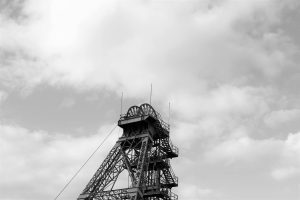This saying from the southern states of the US became popular in May 1977 when Bert Lance, the US Director of the Office of Management and Budget, quoted in Nation's Business magazine. Bert Lance was only for 9 months in office in the Jimmy Carter's administration. He had to resign due to a financial scandal.
Check the right indicators. Like at the birth of each child, the APGAR test is done to check the heath of the little baby. I use the metaphor of a yellow canary in the mine. Miners took canaries underground due to their heightened sensitivity to carbon monoxide. Defining the right indicators is not always easy. The signal must sound around a major problem, be sent out in time for intervention and has to guard against false positives.
The meaning is obvious. Save yourself the trouble of changing something that works and, instead, focus your energy on whatever needs attention. But the key question is: when is something broken?
In 1985, Coca-Cola introduced the New Coke, a new version of the popular drink based on a new recipe. New Coke was supposed to compete against Pepsi Coke but after three months the company was forced to sell the traditional Coca-Cola again after dramatic protests. Despite all kinds of market research, the old recipe was clearly not yet broken.
What a reassuring statement! Save yourself the trouble of changing something that works and, instead, focus your energy on whatever needs attention. Who can argue with that? No one!
However, there are also other popular quotes that say the opposite such as“Standing still is the fastest way of moving backwards” and “If you rest, you rust”. Belgian Prime Minister Jean-Luc Dehaene had a number of – by now legendary – quotes such as “I do not answer hypothetical questions” and “You should only solve a problem when it arises”. He quickly acquired the rather appropriate nickname of 'plumber'. So the fundamental question is “When is something broken?”.

Brussels, May 2013. Israeli pianist Boris Giltburg takes part in the semi-final of the gruelling Queen Elisabeth Competition, the Olympiad of music, in the magnificent Henry Le Bœuf Hall at the Centre for Fine Arts. Watch and admire his performance on YouTube.
An outstanding pianist, accompanied by a flawless orchestra and directed by a masterful conductor, the comments on the video are gushing – “Fantastic Boris!”, “An endless fount of melody coupled with an unerring sense of construction. A completely charming piece and performance”, “Spot on… very enjoyable”.
At the end of the video, the audience applauds enthusiastically. But in Giltburg’s eyes, you see complete despair. He’s smiling but his body language speaks despondency and exhaustion. The conductor shakes his hand encouragingly. So what happened?
It turns out that, in the middle of the concert, Boris Giltburg suffered a complete blackout and couldn’t play a single note. The average listener – like me – didn’t notice it. To us, it’s a beautiful piece of music and a sublime performance. But the blackout didn’t escape the jury's flawless hearing.
This situation is typical of what science calls ‘the curse of knowledge’. When communicating with others, our brain automatically and unconsciously assumes that the recipients have the background to understand.
Giltburg was disappointed because he was sure that the 2200-strong live audience and hundreds of thousands of TV viewers noticed his blackout. However, the average spectator is left thinking “What a pianist!” and “What beautiful music Mozart wrote!”
‘If it ain't broke, don't fix it’ clearly applies in this case. Giltburg and the orchestra had continued to play superbly.
Parents also give the same advice to their children when rehearsing a talk, a play or a performance… “Don’t worry if you forget a bit, just carry on. Your classmates and the audience won’t notice a thing”.
So how did Giltburg do? He made it to the final, gave a masterly performance of the extremely difficult Rachmaninov Concerto No. 3… and won!

United States, 23 April 1985. Coca-Cola CEO Roberto Goizueta announces a new formula for Coca-Cola at a New York press conference. The highly-secretive 7X formula had been tweaked several times since its introduction in 1886, but the taste had never changed. Until then. “I've never been as confident about a decision as I am about the one we're announcing today” Goizueta told the press. Because, according to Coca-Cola's senior management, something was broken that needed fixing.
After all, Pepsi, Coca-Cola's biggest competitor, was steadily gaining market share through aggressive campaigns. In the Pepsi Challenge, consumers blind-tasted different colas. And to their surprise, they preferred Pepsi. An internal investigation at Coca-Cola led to the same conclusion. The old recipe had to be discarded to make way for a sweeter one. New Coke was born and the old Cola disappeared.
Barely three months later on 11 July 1985, Donald Keough, Chairman of the Coca-Cola Company, announced the return of the original Coca-Cola at a press conference. Over the past few months, the company had been overwhelmed with angry reactions to the new recipe. Organisations were set up protesting about the change, lawsuits were filed and Coca-Cola's share price fell. The company's management couldn’t understand this storm of protest. They’d conducted extensive research among 190,000 consumers and the preference was for the New Coke. Right? Why this? “The simple fact is that all of the time and money and skill put into consumer research on the new Coca-Cola could not measure or reveal the depth and the binding emotional attachment to the original Coca-Cola, felt by so many people” said Donald Keough. “They said that they wanted the original taste of Coca-Cola back and they wanted it soon”. The press conference was a huge success and TV stations even interrupted their programming to celebrate the return of the original Coca-Cola. The recipe for New Coke was modified in 1990 and taken off the shelves completely in 2002.
Here, the adage ‘If it ain't broke, don't fix it’ is as clear as day.
It’s frustrating and unfair to the 2.2 million-plus project managers on LinkedIn whose raison d'être is to solve problems. In the inspiring book The Management Myth, ex-consultant Matthew Stewart describes how consultancies operate. A consultancy reviews the financial details of a company they plan to approach, meets with the CEO and shows various graphs to illustrate that the firm has a big problem… only 20% of their customers contribute to their profitability. The CEO asks the consulting firm to solve this problem immediately. How on earth could his own employees never have identified this!
This brings us to the heart of the matter… Exactly what are the basic indicators for thoroughly understanding a problem?

The story of the dodo is well-known. This stocky bird, endemic to Mauritius, had no natural enemies and had completely lost its ability to fly. Evolutionary theory, however, couldn’t have foreseen that the island would be colonised around 1600. The Dutch introduced pigs, dogs and rats to the island and the dodo’s song was over in less than 100 years. The bird couldn’t have foreseen this danger and the story of the dodo shows survival of the fittest in all its rawness. ‘Dead as a dodo’ is an expression used today to describe a hopeless situation.
Miners are also wary of a dodo situation. They work in environments fraught with danger – collapses, explosions and fires and carbon monoxide build-up which, because of its odourless and colourless properties, is a killer. Until December 1986, British miners took canaries underground due to their heightened sensitivity to carbon monoxide. When the bird started to sing loudly, it was time for the miners to evacuate. Undoubtedly, the little bird saved the lives of thousands until being replaced by a sensor.
The yellow canary has therefore become a metaphor for an efficient warning system when danger or a problem is approaching – a symbol for recognising and dealing with problems quickly by using the right indicator.
The challenge then, is to find the appropriate canary in a given situation. In a startup, for example, that might be the cash position. In another company in a competitive market, it might be customer satisfaction. In the case of climate change, it’s the demise of coral reefs and the melting of the Polar ice. At the birth of each child, it’s the Apgar score that tests breathing, pulse, muscle tone, skin colour and reaction to stimuli.
In his book Upstream, Dan Heath explores how to get to the root of problems and – even better – avoid them. For Heath, the yellow canary as an indicator has to fulfil a number of conditions; the signal must sound around a major problem and be sent out in time for intervention. It also has to guard against false positives or you will not be able to intervene after a while. Who carries on down the street when your neighbour's house alarm is going off?
‘Upstream’ refers to a story by Irving Zola. While picnicking with a friend by a river, you suddenly hear a child screaming in the water. You immediately dive into the river and save them. Once back on dry land, you hear another child screaming in the water. This time, your friend dives into the water. This goes on for a while until one of you says “Let's look upstream to find out what’s happening there and get to the root of the problem”.
It reminds me of the wonderful novel The Eight Mountains by Paolo Cognetti in which the father asks his son where the future lies – upstream, in the mountains or downstream, in the valley? The son incorrectly answers ‘downstream’. Only later does he realise ,“I began to understand something, namely that for a river fish everything comes with the flow: insects, branches, leaves, whatever. Therefore, it looks upstream, waiting for what is coming. If the point at which you immerse yourself in a river is the present, I thought, then the past is the water that has washed past you, that goes further downstream, where there is nothing left for you, while the future is the water that comes from above, bringing dangers and surprises. The past is downhill, the future uphill”.
If it ain't broke, don't fix it. But look for the right indicators. So what’s your canary to avoid ending up in the same situation as the dodo? And what was a possible yellow canary for Boris Giltburg at the start of the Queen Elisabeth Competition? And why did Coca-Cola focus on the wrong yellow canary?
Per newsletter subscription, I donate one tree.
Subscribe to the newsletter and Dr Quote will plant a tree for Entrepreneurs Without Frontiers. Our first goal is to plant 1001 trees. Above you can see how many trees we have already planted.
Do you want to make an additional donation? You can do so by clicking here below. You will then automatically go to the website of Entrepreneurs Without Frontiers.
Get your favorite quote examined by dr. Quote next month!
Discover the essence of quotes and explore how to apply this in our everyday live
| Cookie | Duration | Description |
|---|---|---|
| cookielawinfo-checbox-analytics | 11 months | This cookie is set by GDPR Cookie Consent plugin. The cookie is used to store the user consent for the cookies in the category "Analytics". |
| cookielawinfo-checbox-functional | 11 months | The cookie is set by GDPR cookie consent to record the user consent for the cookies in the category "Functional". |
| cookielawinfo-checbox-others | 11 months | This cookie is set by GDPR Cookie Consent plugin. The cookie is used to store the user consent for the cookies in the category "Other. |
| cookielawinfo-checkbox-necessary | 11 months | This cookie is set by GDPR Cookie Consent plugin. The cookies is used to store the user consent for the cookies in the category "Necessary". |
| cookielawinfo-checkbox-performance | 11 months | This cookie is set by GDPR Cookie Consent plugin. The cookie is used to store the user consent for the cookies in the category "Performance". |
| viewed_cookie_policy | 11 months | The cookie is set by the GDPR Cookie Consent plugin and is used to store whether or not user has consented to the use of cookies. It does not store any personal data. |